Bark Can Be Beautiful
During the growing season, trees’ bark steps out of the limelight. Fact is, it’s probably out of the sunlight as well. You hardy notice it.
It’s not until leaves have fallen in December that the true good looks of tree bark comes to the forefront, and that’s happened the past several days after our first really cold weather.
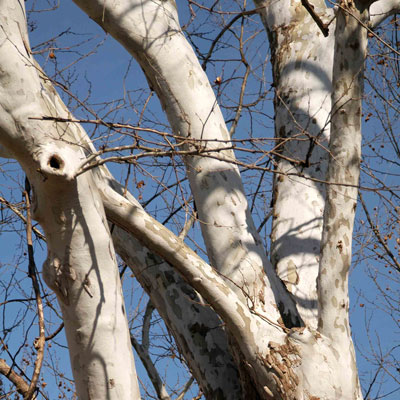
Photo: Sycamore trunks stand out like beacons in the deciduous forest in winter.
Bark is a protective tissue. Most of us might have assumed that. But that protection may be more critical than you might have thought, and here’s why.
Just inside the bark is a cylindrical tissue known as the phloem. Just inside the phloem is the cambium layer, and inside that is the xylem. That’s all basic plant anatomy, but it’s those tissues’ functions that is the critically important consideration.
Let’s start from the inside and work our way outward.
• The xylem is like a giant wooden straw. It’s the conducting tissue that carries water and nutrients from the tree’s roots up to its leaves. The xylem makes up perhaps 95 percent of the volume of any tree’s trunk – it’s where lumber comes from. Most xylem cells are dead – still strong and still functioning, but dead.
• The cambium is a cylinder that surrounds the xylem. Cambium cells are very much alive, dividing constantly to form new xylem cells on their inside and new phloem cells on their outside. It is the tissue that allows a tree’s trunk to grow thicker, so it’s critical for the survival of the lumber industry, just as one good example.
• The phloem is also a cylindrical tissue, and it functions to carry sugars that have been manufactured in the leaves during photosynthesis down to the roots.
• And then there’s our bark – beautiful bark. But before we get into that, one of my real points in writing about bark is to warn you that if bark is damaged, the tree will be proportionately hurt. When bark is cut or peeled mechanically, the phloem is lost as well. If it is damaged all the way around the trunk, roots die and the plant will likely die, too.
Note: Since it’s a dead tissue, bark will slough off as a tree’s trunk grows larger. It may be in small pieces you don’t even notice, or it can be in long strips and big chunks. In most cases, that’s of no concern.
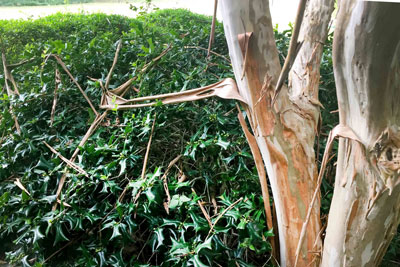
Photo: Bark from the Glendora White crape myrtle in the Sperry landscape exfoliates naturally – absolutely no cause to worry.
The takeaway fact…
Don’t do anything that could damage a tree’s bark halfway or more around it:
• No dog chain wrapped around it in a way where the dog could rub through the bark.
• No old nursery tag left in place, and no twine or cable that was used to hold the root ball in place.
• Most of all, no line trimmer cutting into the trunk.
Once cut, there is no way to put the severed bark back together again.
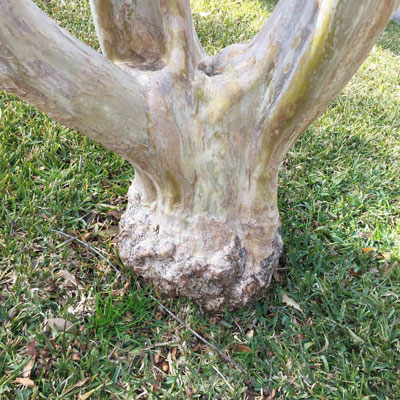
Photo: Crape myrtle trunk has been damaged badly by repeated cutting by a line trimmer.
A photo gallery of the trunk bark of several common trees grown in Texas…
Here are a few types of trees and the barks they proudly display.
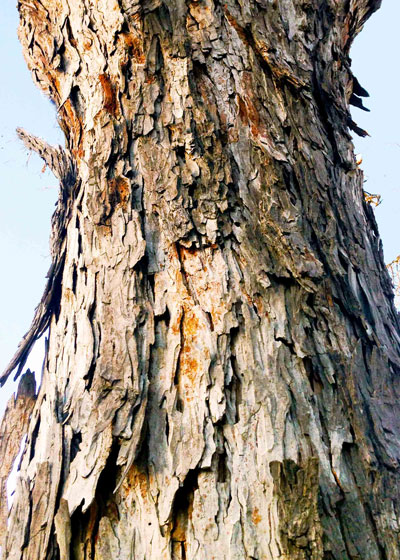
Pecan
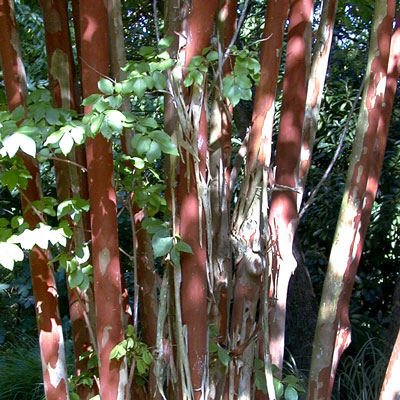
Natchez crape myrtle
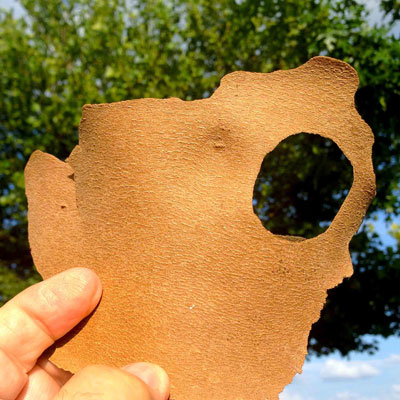
Exfoliated sycamore bark
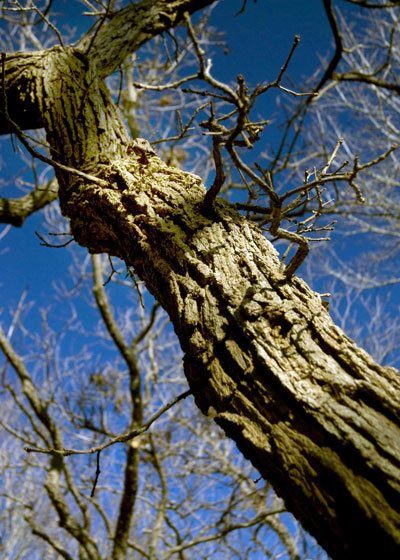
Bur oak
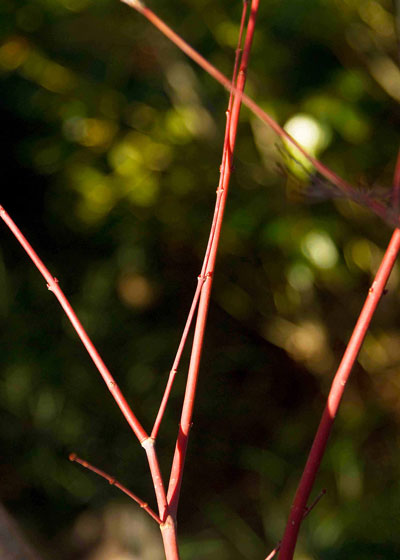
Coral bark maple
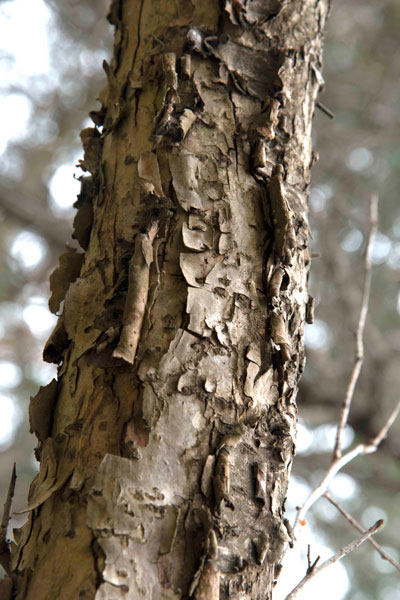
Mexican plum
